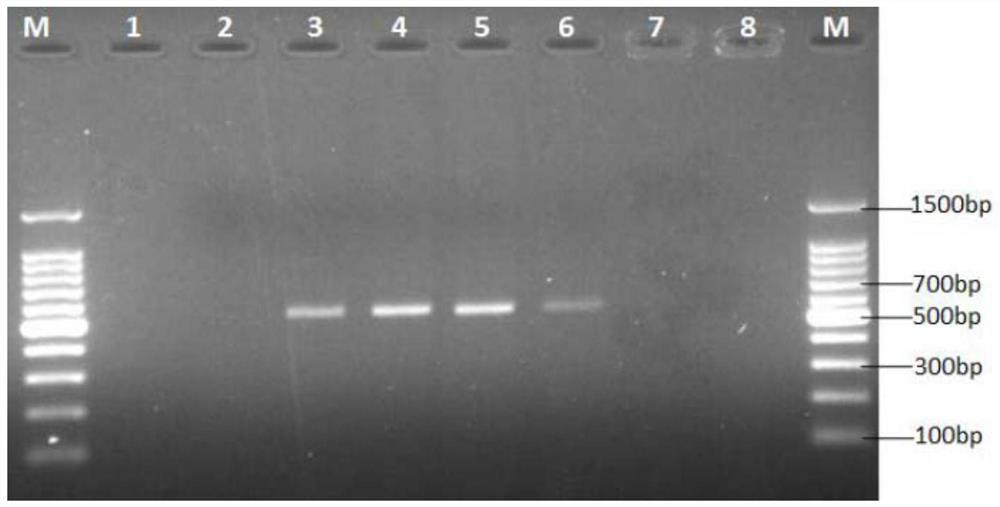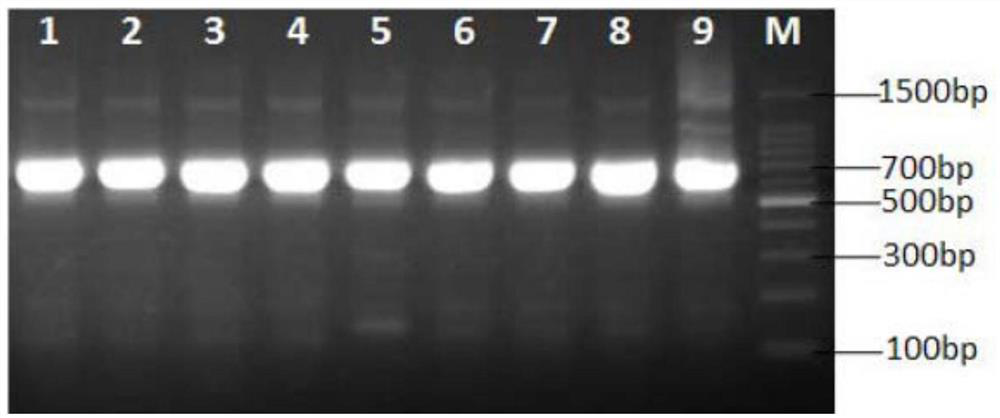A rapid method for identification of A. gigantea
A technique of alily fly and giant tail, applied in the field of molecular biological identification, can solve the problems that non-insect professionals are difficult to identify morphological species, difficult to accurately identify necrophilic flies, difficult to classify and identify, etc. Forensic identification cycle, high sensitivity and reliable results
- Summary
- Abstract
- Description
- Claims
- Application Information
AI Technical Summary
Problems solved by technology
Method used
Image
Examples
Embodiment 1
[0026] S1, 8 species of necrophagic flies were collected from the site and DNA samples were extracted respectively. The obtained DNA samples were samples to be identified and marked as 1-8 respectively;
[0027] Among them, the residual limbs of flies were washed with deionized water, blotted dry with absorbent paper, placed in a centrifuge tube, cut into pieces with ophthalmic scissors, and DNA samples of fly tissues were extracted by the conventional Chelex-100-proteinase K method, and stored at 4°C.
[0028] S2, designing specific primers and performing PCR amplification on the sample to be identified;
[0029] Wherein, the specific primer sequence is:
[0030] 5'-AACGGAGCTGGAACAGGATG-3', as shown in SEQ ID NO.1;
[0031] 5'-AAGCTCGGGTATCAACGTCT-3', as shown in SEQ ID NO.2;
[0032] The PCR amplification system is: 5ul of 2×Premix Taq solution, 0.4ul of each of the two primer sequence solutions, the concentrations of the primer sequence solutions are both 10umol / L, 1.2ul ...
PUM
 Login to View More
Login to View More Abstract
Description
Claims
Application Information
 Login to View More
Login to View More - R&D Engineer
- R&D Manager
- IP Professional
- Industry Leading Data Capabilities
- Powerful AI technology
- Patent DNA Extraction
Browse by: Latest US Patents, China's latest patents, Technical Efficacy Thesaurus, Application Domain, Technology Topic, Popular Technical Reports.
© 2024 PatSnap. All rights reserved.Legal|Privacy policy|Modern Slavery Act Transparency Statement|Sitemap|About US| Contact US: help@patsnap.com










